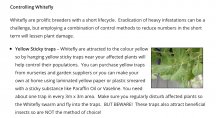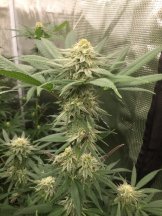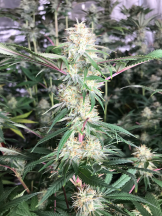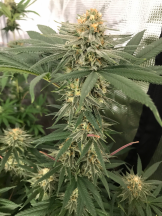Ozjet Express
- Thread starter Ozjet68
- Start date
H.A.F.
a.k.a. Rusty Nails
I have had success with the MicrobeLift BMC (mosquito control) stuff. organisms that live in the soil and prevent any larvae from becoming viable.
It's made for aquariums and ponds and such, so I think it loses it's viability if the soil dries out. but I just use 1ml for 4 gallons of water, so it goes a long way. I still use the gnat traps, but now they get removed at watering and put back, instead of discarded and replaced
It's made for aquariums and ponds and such, so I think it loses it's viability if the soil dries out. but I just use 1ml for 4 gallons of water, so it goes a long way. I still use the gnat traps, but now they get removed at watering and put back, instead of discarded and replaced
Ozjet68
Insanely Active Member
Thanks for the tip HAF . As yet i haven’t noticed an obvious negative affect caused by them on the development of growth so I’m not overly bothered but I’ll keep that in mind if it becomes an issue . Im actually more concerned by the white fly than I am the gnats if numbers start to swell .I have had success with the MicrobeLift BMC (mosquito control) stuff. organisms that live in the soil and prevent any larvae from becoming viable.
It's made for aquariums and ponds and such, so I think it loses it's viability if the soil dries out. but I just use 1ml for 4 gallons of water, so it goes a long way. I still use the gnat traps, but now they get removed at watering and put back, instead of discarded and replaced
619KGB
PICK YOUR OWN
Looking yummy. Finding more common that bag soils of any type are suspect for bugs so I hit things with med grade peroxide and found that mixing bt mosquito pond tabs in a tea to knock out knat larve. Mixes that have more drainage in the upper root zone near the rootstock also prevent larvae from being happy there. Another recommendation I found for white flies is worm casting top dressing.
Ozjet68
Insanely Active Member
Ah cool . Just so happens I just did top dress with worm castings a couple days ago . Be interesting to see if it makes a difference . I’ve had white fly destroy my Broccoli crowns in my veggie patch but Im not sure how much damage they could do to my plants . They’re not in huge numbers but as we know if conditions are conducive numbers can explode .Looking yummy. Finding more common that bag soils of any type are suspect for bugs so I hit things with med grade peroxide and found that mixing bt mosquito pond tabs in a tea to knock out knat larve. Mixes that have more drainage in the upper root zone near the rootstock also prevent larvae from being happy there. Another recommendation I found for white flies is worm casting top dressing.
Ozjet68
Insanely Active Member
Thank you mate . Appreciate the positive feedback . I think I made the right choice going soil . Simple suites my comfort zoneYour plants look super happy! Nice work!
H.A.F.
a.k.a. Rusty Nails
I don't think the gnats have really been anything but an annoyance, since they are non-destructive. Do the white-flies also breed in the soil? MicrobeLift has a hoard of other products for specific pests. Might be worth a look.Thanks for the tip HAF . As yet i haven’t noticed an obvious negative affect caused by them on the development of growth so I’m not overly bothered but I’ll keep that in mind if it becomes an issue . Im actually more concerned by the white fly than I am the gnats if numbers start to swell .
Ozjet68
Insanely Active Member
That’s a good question . My guess would be they lay clutches of eggs on the underside of leaves as aphids do but I’m certainly no expert . I notice when I turn the fans off they rise up from beneath the canopy and target both the LEDs and the stick pads . Could be research time . Always some little bastard critter trying to sabotage the showI don't think the gnats have really been anything but an annoyance, since they are non-destructive. Do the white-flies also breed in the soil? MicrobeLift has a hoard of other products for specific pests. Might be worth a look.
Ozjet68
Insanely Active Member
Yep as I suspected . Underside of leavesIf they lay eggs on leaves I wouldn't bother looking at soil additives LOL
619KGB
PICK YOUR OWN
"An exciting development in whitefly control has come to light over the past several years. Plants that are well mulched with worm castings repel a variety of pests, especially whiteflies. Apparently the worm castings raise the level of the chitinase enzyme in the plants, which whiteflies find distasteful and avoid.If they lay eggs on leaves I wouldn't bother looking at soil additives LOL
I recommend spreading a 1-inch layer of worm castings around infected plants and periodically applying more, especially through the summer months. It takes a little time for worm castings to move up into the foliage and for the enzyme to form. Small plants are usually free of whiteflies in three or four weeks, but larger plants may take a while longer."
How does it work?
Worms feed on bacteria and fungus. One of these bacteria is found in the worm casting eat chitin. Most insects, including the white fly, exoskeleton is made from chitin. When black worm castings are applied to the soil, the plants absorb the nutrients from the worm castings, including Chitinase an enzyme that will dissolve chitin. When a whitefly tries to eat a plant fortified with black worm castings, they sense the bacteria that feeds on them and fly away.
Vermi Technology Unlimited — Coming Soon
vermitechnology.com
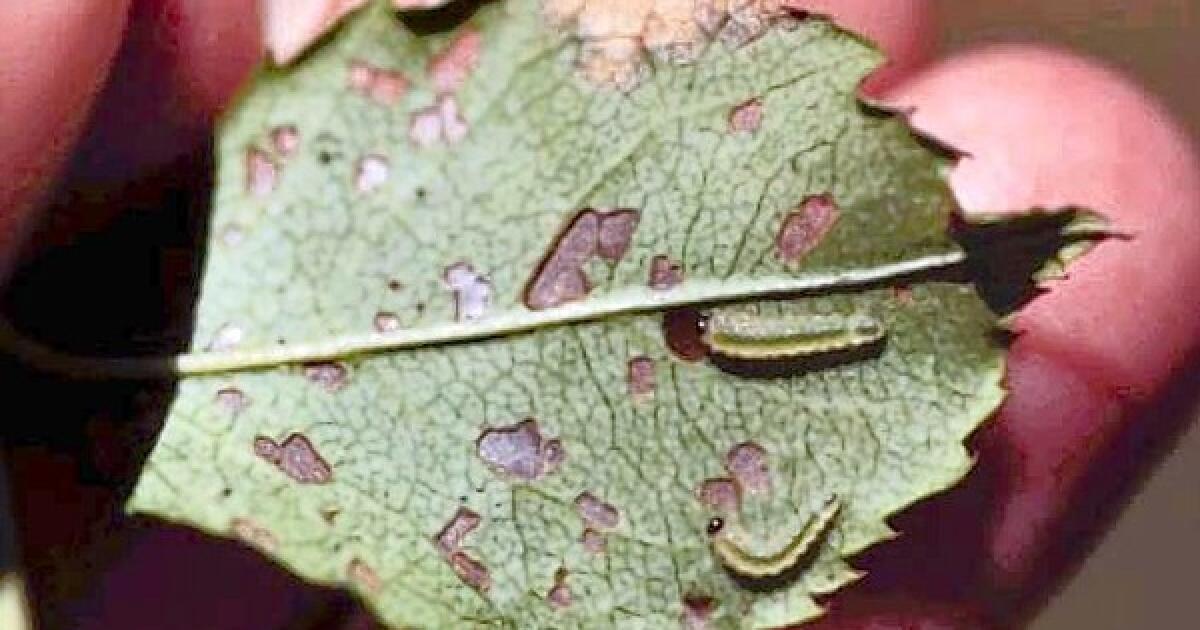
The Coastal Gardener: No need to panic over a few summer pests
Summer is upon us. Not only are temperatures rising, but so is the likelihood of a few garden pests.

Last edited:
Ozjet68
Insanely Active Member
Ok well researched and great info. Glad I top dressed with worm castings only last week . It’s pretty fascinating how it all comes together and interacts . Nature has a way of finding that balance"An exciting development in whitefly control has come to light over the past several years. Plants that are well mulched with worm castings repel a variety of pests, especially whiteflies. Apparently the worm castings raise the level of the chitinase enzyme in the plants, which whiteflies find distasteful and avoid.
I recommend spreading a 1-inch layer of worm castings around infected plants and periodically applying more, especially through the summer months. It takes a little time for worm castings to move up into the foliage and for the enzyme to form. Small plants are usually free of whiteflies in three or four weeks, but larger plants may take a while longer."
How does it work?
Worms feed on bacteria and fungus. One of these bacteria is found in the worm casting eat chitin. Most insects, including the white fly, exoskeleton is made from chitin. When black worm castings are applied to the soil, the plants absorb the nutrients from the worm castings, including Chitinase an enzyme that will dissolve chitin. When a whitefly tries to eat a plant fortified with black worm castings, they sense the bacteria that feeds on them and fly away.
Vermi Technology Unlimited — Coming Soon
vermitechnology.com

The Coastal Gardener: No need to panic over a few summer pests
Summer is upon us. Not only are temperatures rising, but so is the likelihood of a few garden pests.www.google.com







